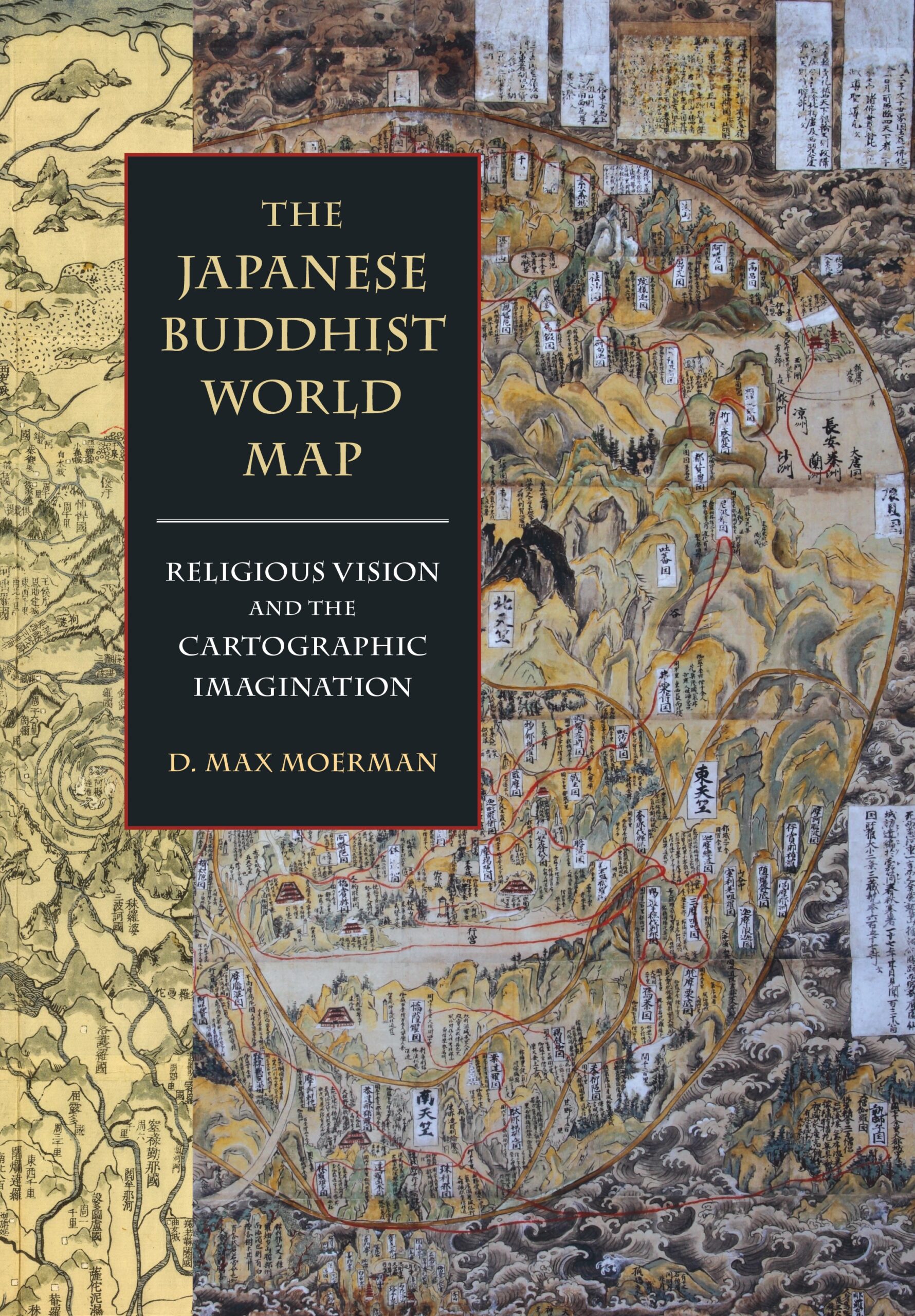The Japanese Buddhist World Map: Religious Vision and the Cartographic Imagination
Awards
- Winner of the Choice Magazine Outstanding Academic Title, 2022
- About the Book
-
From the fourteenth through the nineteenth centuries Japanese monks created hundreds of maps to construct and locate their place in a Buddhist world. This expansively illustrated volume is the first to explore the largely unknown archive of Japanese Buddhist world maps and analyze their production, reproduction, and reception. In examining these fascinating sources of visual and material culture, author D. Max Moerman argues for an alternative history of Japanese Buddhism—one that compels us to recognize the role of the Buddhist geographic imaginary in a culture that encompassed multiple cartographic and cosmological world views.
The contents and contexts of Japanese Buddhist world maps reveal the ambivalent and shifting position of Japan in the Buddhist world, its encounter and negotiation with foreign ideas and technologies, and the possibilities for a global history of Buddhism and science. Moerman’s visual and intellectual history traces the multiple trajectories of Japanese Buddhist world maps, beginning with the earliest extant Japanese map of the world: a painting by a fourteenth-century Japanese monk charting the cosmology and geography of India and Central Asia based on an account written by a seventh-century Chinese pilgrim-monk. He goes on to discuss the cartographic inclusion and marginal position of Japan, the culture of the copy and the power of replication in Japanese Buddhism, and the transcultural processes of engagement and response to new visions of the world produced by Iberian Christians, Chinese Buddhists, and the Japanese maritime trade. Later chapters explore the transformations in the media and messages of Buddhist cartography in the age of print culture and in intellectual debates during the eighteenth and nineteenth centuries over cosmology and epistemology and the polemics of Buddhist science.
The Japanese Buddhist World Map offers a wholly innovative picture of Japanese Buddhism that acknowledges the possibility of multiple and heterogeneous modernities and alternative visions of Japan and the world.
- About the Author(s)
-
D. Max Moerman, Author
D. Max Moerman is professor in the Department of Asian and Middle Eastern Cultures, Barnard College, Columbia University.
- Reviews and Endorsements
-
- At once a study of cartography, Buddhist cosmology, and Japanese history, this narrative takes the reader through how Buddhist mapmakers saw the changing world from the 14th through the 19th centuries. . . . Unique in both its topic and approach, this in-depth study will be of great importance to scholars interested in the history and culture of Japanese Buddhism, and also to those interested in differing methods in the history of cartography.
—A. N. Weiss, Loyola Marymount University, CHOICE - The Japanese Buddhist World Map by D. Max Moerman offers a fine balance of an academic text in multiple respects. It is equal parts religious/ethnographic history, philosophical treatise, and cartographic analysis. . . . [T]his book offers a thoughtful approach to the subject matter, and a beauty of form that draws the discerning reader in. . . . Ultimately, [it] would make a fine addition to any academic library with a cartographic interest, a religious studies or Japanese studies department, or a philosophy or graphic design section. It will appeal to any reader interested in maps, Japan, or ideas of time and place and the ways these can all be represented.
—Martin Chandler, Cape Breton University, Western Association of Map Libraries (WAML) Information Bulletin - Max Moerman’s The Japanese Buddhist World Map is a long-awaited event for the field. Trained in Japanese religion, Moerman is steeped in visual culture as well. Having systematically studied Buddhist mandalas, maps, and models for over a decade, he is well equipped to make them legible for an Anglophone audience. And the University of Hawai‘i Press has stepped up to support the project. No expenses have been spared on production. Chinese characters are inserted throughout, the scholarly apparatus is sturdy, and the book is a thing of beauty. More than 130 high-resolution images, including scores of detailed close-ups, adorn its 300+ glossy pages.
—Kären Wigen, Imago Mundi, 74:2 With this in-depth examination, Moerman greatly expands our knowledge and brings to light a
wealth of new material. The value of Moerman’s study is not restricted to its wealth of sources,
for his approach to examining East Asian maps is refreshing and can serve as the model not only
for the study of Buddhist maps but for considering East Asian mapping practices more generally. . . Beautifully written, The Japanese Buddhist World Map is a must-read for anybody interested in the history of Edo-period Japan and in the history of (not just Japanese) mapmaking practices and science.
—Elke Papelitzky, University of Oslo, Japan Review
- At once a study of cartography, Buddhist cosmology, and Japanese history, this narrative takes the reader through how Buddhist mapmakers saw the changing world from the 14th through the 19th centuries. . . . Unique in both its topic and approach, this in-depth study will be of great importance to scholars interested in the history and culture of Japanese Buddhism, and also to those interested in differing methods in the history of cartography.










